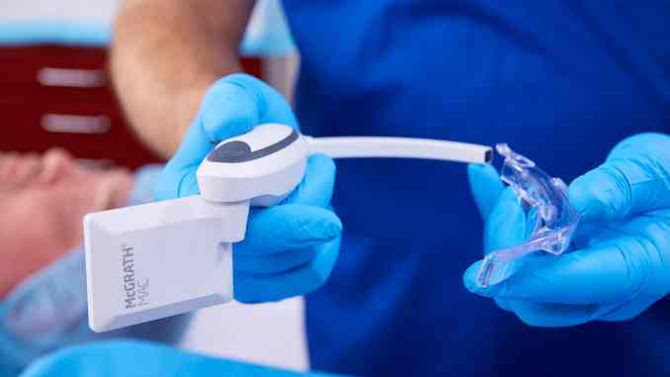Anesthesia Video Laryngoscope; Provide Better View of the Larynx than Direct Line-Of-Sight Laryngoscope
Video laryngoscopy is a form of indirect laryngoscopy in
which the clinician does not directly view the larynx. Anesthesia video
laryngoscope allows a doctor to view the larynx indirectly, allowing for an
'around-the-corner' view. Video-assisted laryngoscopy may provide a superior
view of the larynx compared with direct line-of-sight laryngoscopy. Video
laryngoscope helps improve laryngeal view compared to direct laryngoscopy in
patients with suspected difficult intubation and simulated difficult airway
scenarios. Laryngoscopy can be used to treat some problems in the vocal cords
or throat.
Anesthesia video laryngoscope-assisted tracheal intubation
devices have become an alternative to the traditional laryngoscopes in recent
times. These systems or devices help to improve the view with better initial
success rates, and help patients manage challenging intubation in order to
reduce harm and improve care. Anesthesia
video laryngoscope systems are easy to use, less fragile, and offer
supraglottic vantage point. Video laryngoscopy is a relatively new technology
developed to improve the success rate of tracheal intubation. A major advantage
of the video laryngoscope is that it provides comprehensive tracheal intubating
capability.
Moreover, the outbreak of COVID-19 (pandemic) brought the
video laryngoscope increasingly into mainstream anaesthetic practice.
Anesthesia video laryngoscope is being used as a method of choice for airway
management in patients during the COVID-19 outbreak. For example, in July 2020,
Nihon Kohden (US) launched the NK AWS-S200 video laryngoscope for the safe and
secure intubation of patients in even the most difficult situations. The NK AWS-S200
help reduce the exposure to aerosolized particles ii, protecting clinicians
while intubating patients suffering from COVID-19 or other respiratory
infections.
Anesthesia video laryngoscope offers various important
advantages, such as the ability to view the larynx (the area of the throat
containing the vocal cords and used for breathing, swallowing, and talking) in
much greater detail than that is possible with a physical examination. However,
some challenges faced during the use of anesthesia video laryngoscopes are
irritation, internal bleeding, breathing problems, and voice pitch
complications. Moreover, high cost of devices and availability of alternative
devices hampers the video laryngoscope demand.




Comments
Post a Comment